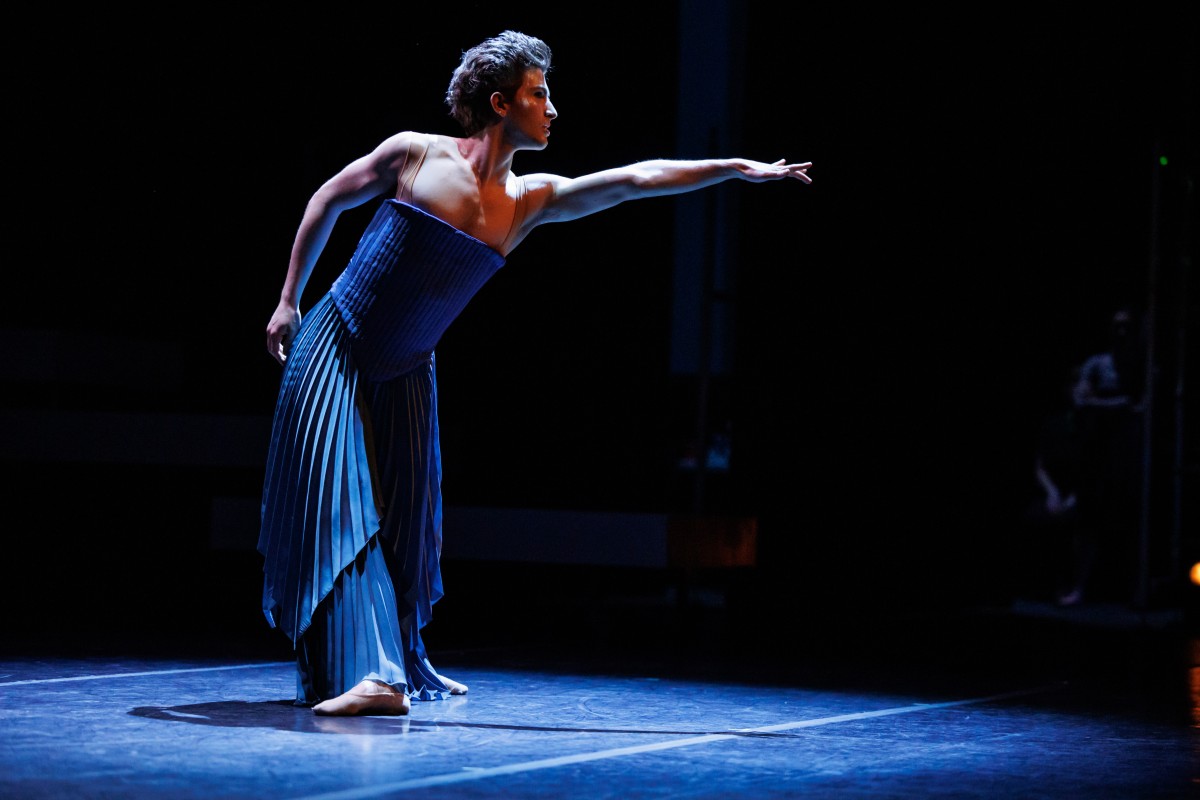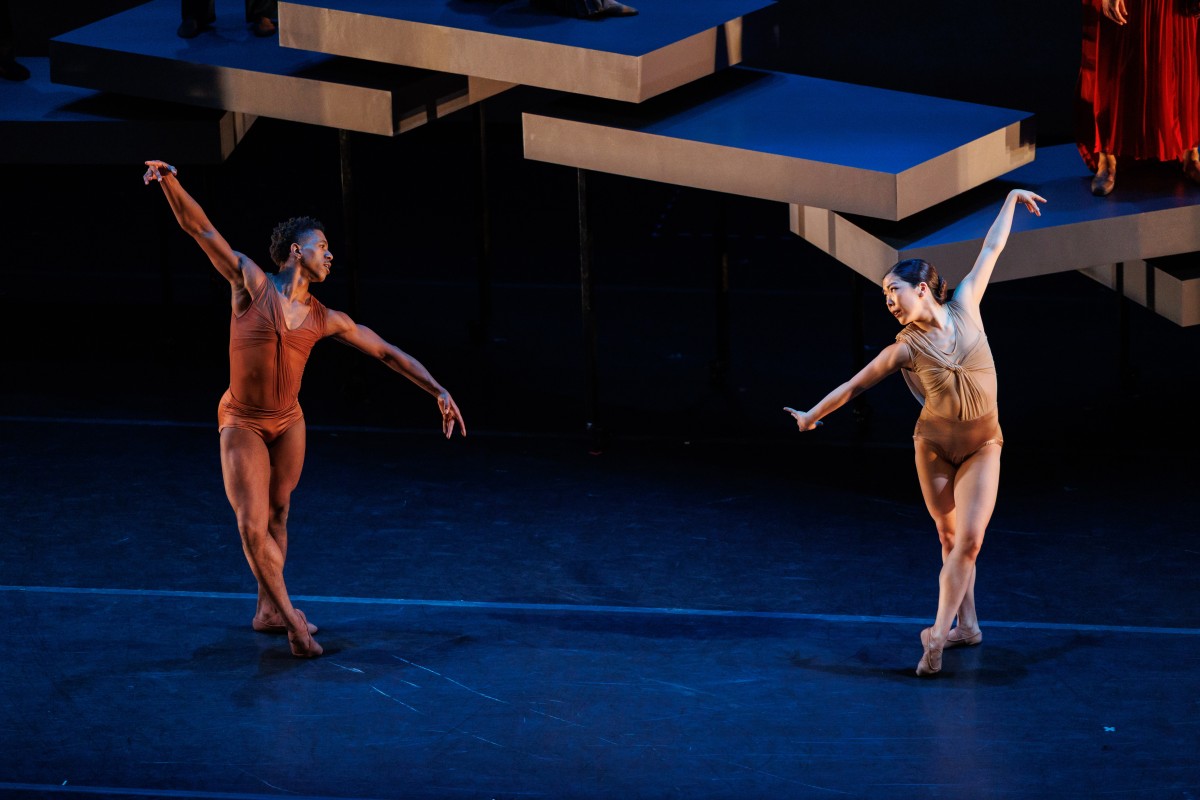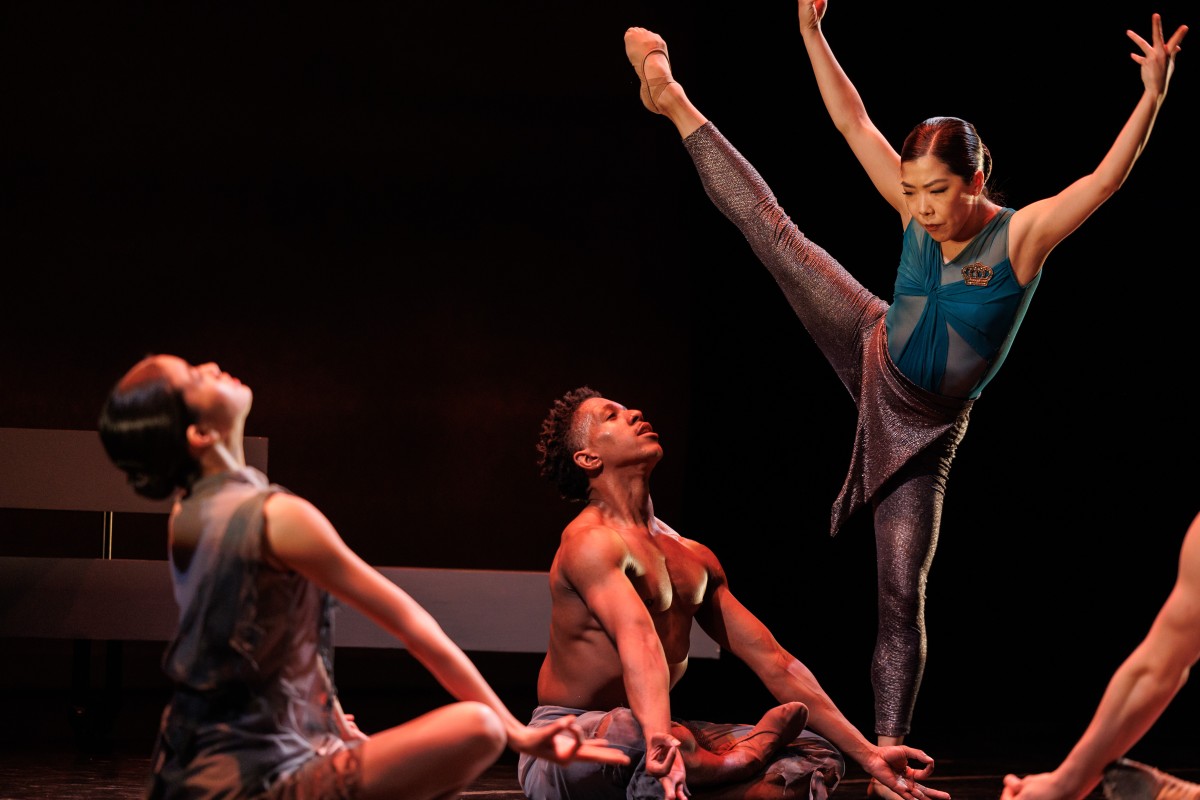
Nicolo Fonte by Jana Cruder
Nicolo Fonte On His New Full-Evening Work For BalletX
On the cusp of BalletX’s world premiere of Sidd: A Hero’s Journey, we had the chance to meet with choreographer Nicolo Fonte about his new work. Nicolo, known for his musical and dynamic work that plays with the extremes of the human body and tenderness of its spirit, is the type of choreographer whose creativity is infectious and playful, devouring the entire room. I know this from working with him first hand for many creations over a span of 11 years.
Originally from Brooklyn, NY, dance has taken Nicolo across the globe. First, to Montreal where he danced for Les Grand Ballet Canadiens where he met famed choreographer Nacho Duato. Nacho was so impressed with Nicolo that he invited him to join Compañia Nacional de Danza(CND) in Madrid. Although Nicolo started choreographing in Montreal, his choreographic career took flight at CND and he quickly began creating throughout Europe and America.
Sidd, as he likes to call it, is a work close to Nicolo’s own journey. He takes his passion for dance, yoga, and self discovery and uses Hermann Hesse’s iconic 1922 novel Siddhartha as a launch pad for a work that entertains and delights. Join us as we explore his process, inspiration, and production.

BalletX in Sidd: A Hero’s Journey by JohnRyan Lockman.
You have an upcoming full evening-length world premiere for BalletX, Sidd: A Hero’s Journey. The work is inspired by Herman Hesse’s novel Siddhartha. What about Siddhartha’s story is inspiring to you and how much of this tale will we see in the work?
There are many things in the book that I think are really interesting. I really liked the character of Siddhartha. The book was written in the 1920s by Hermann Hesse. He’s a German guy writing about Eastern philosophy because it influenced him in a big way.
A big part of the book is that Siddhartha rejects dogma – he’s got a set out on his own path. Whether it is the dogma of his own family or the dogma of the Buddha – he sets out on his own.
When he meets the Buddha he says, I believe that you are an enlightened being, but I’m not following you because I want to go and find my (own) enlightenment. He goes on this whole journey and then comes back to discovering that simplicity and not rejecting people is the first step in making this spiritual transformation. The big lesson you learn in the spiritual path is that all life is suffering – there will always be success and failure, love and loss, but you learn to accept all of it with equanimity and non-attachment.
That’s what I got out of the book.
I read a few translations and Susan Bernofsky’s translation was just so much more beautiful. It was really watery, and water plays a big part in the book. The river tells stories and you listen to the river for clues and things like that. In the book, the water tells stories so that Siddharthat can learn how to listen. That element alone was really attractive to me.
There’s a scene where all the dancers become the river and as the river, they try to drown him [Sidd]. It is at that moment that he wants to kill himself because he hates who he’s become. So he’s like, I’m just gonna end it all, and jumps into the water. He doesn’t really do it in the book, but this ties into the second part of your question.
[My opinion is] if you want the book, read the book.
The ballet Sidd is inspired by the book Siddhartha, but I never intended to make a literal translation of the story from page to stage. I was less interested in the specifics of the plot and its setting than the heart of the story, which is universal, and so I take artistic liberties. I also didn’t feel I should be the one to set a ballet in India – the culture is so rich and I would remain outside that culture as a westerner. But I felt strongly that I could set it in an ‘anywhere’ land and still share the beautiful message of the story.
When you read the book, you are free to let your imagination encode all the specific information in any way you like – but on stage in a ballet all those decisions have to be made by the creators. An example of an artistic liberty I take is that I’ve turned one of the characters into a non-binary role that I created on a woman in the company, because I felt that helped keep the heart of the story (and its ambiguity) alive on stage. In the context of this re-imagining of Siddhartha, it makes absolute sense to me.
Another example is Kamala. He meets a courtesan, he follows her lead and then they eventually come to love and understand one another. She dies in the book from a snake bite and I didn’t want to portray that on stage. So I just changed the storyline. She goes away as if she was dying. It’s the same in theatrical terms because the audience just needs to accept that she is no longer there. So I did take artistic liberties with the story.

BalletX in Sidd: A Hero’s Journey by JohnRyan Lockman.
The roster of companies that have performed your work is quite impressive; this list includes Dutch National Ballet, Houston Ballet, Philadelphia Ballet, and many more. You have developed close relationships with many of these companies, including BalletX where you created your first full-evening work, Beautiful Decay, in 2013. How does working with a company and dancers that you have existing relationships with influence your process?
It’s always great when you know the dancers. I think one of the biggest advantages of that is actually not when you’re in the studio, but when you know the dancers in advance of that and you’re thinking of an idea for a ballet.
You can already not just have the idea for the ballet in your head, but you can start seeing specific people doing what it is you want to do.
It really starts to influence what it is you’re going to do choreographically for that person, even before you started, because you kind of know their strengths.
I’ve worked where I’ve tried to take advantage of all their strengths and then I’ve done it in a way where I want to use a person completely differently.
It has to also do with the direction of the company, the vibe of the company, and when you know and understand it, it really helps shape what you think you’re going to do for them.
Outside of being a choreographer, you are also a committed yogi and yoga teacher. Has your yoga practice influenced Sidd?
I’m a very dedicated yoga practitioner. I study Iyengar Yoga which is very demanding and rigorous – not only physically, but also philosophically with your study of the Yoga sutras, and so on and so forth. During the lockdown I became a certified teacher, so I actually teach it.
This was another element that I thought, wow, talk about bridging the two worlds I inhabit. Even though Siddhartha isn’t about yoga, it is about spiritual transformation and embarking on a spiritual path. That was another reason why I chose the book – bridging the two worlds that I’m inhabiting, because I really don’t blend them together otherwise.
I don’t really see much connection between being a dancer and being a yoga practitioner. So this was a way for me to kind of bridge the two separate worlds that I inhabit and to make this theatrical experience.

BalletX in Sidd: A Hero’s Journey by JohnRyan Lockman.
Having worked with you for over a decade myself, I feel very familiar with not only the physical demands you ask of your dancers, but also the artistic demands. Something that you are passionate about is human connection. Why is showing a human connection in your work so important or interesting to you?
I don’t know exactly when I started obsessing about that because it really was a later development. I sort of went on a campaign, even a crusade, to sort of say, why is contemporary dance so apocalyptic and everything so dark? It’s apocalyptic music and we’re all wiggling around on stage and no one’s looking at anyone, everyone is too cool.
You can move in a contemporary way, making your body bend in extreme ways and have all this excitement and thrill of seeing what the human body is capable of doing while at the same time experiencing that with other people on stage.
I think when the audience feels that connection, they themselves connect and they start almost vicariously living through the experience on stage. It’s that ability to imagine yourself doing that. I think there has to be a welcoming-in to that. And one of the ways is through acknowledging the person you’re dancing with. Looking at them and having that experience, saying, I see you and we’re in this together and we’re doing a beautiful thing.
Hopefully, even if it’s momentarily, we’ve affected someone’s life in the audience, even if it’s for five minutes, that there’s a moment of joy, absolute joy.
Can you tell us about some of the production design elements of Sidd? What can the audience expect to see?
There’s a really cool set in the ballet, and it’s designed by Michael Korsch, and he’s also the lighting designer. It’s a modular set that creates all these environments, and the dancers physically move the set around the stage.
It stands about 11 feet tall and It folds in eight different ways. That’s so interesting because you know, if you study Buddhism, it’s the eightfold path in Buddhism and so he was also tapping into the spirituality of the idea.
No one is going to look at the set and be like, oh, that’s the Buddhist eightfold path, but it is so interesting and cool that he did that.
We worked with Mark Eric, a dance costume designer based in New York, who made really interesting costumes. There’s 30-something costumes and 12 dancers.

BalletX in Sidd: A Hero’s Journey by JohnRyan Lockman.
Based on the title, is it possible that The Hero’s Journey by Joseph Cambell is also an influence on this work?
It’s more a reference to being his own personal hero, the character of Siddhartha. He goes through all these transformations in life and then he sort of comes right back around to discovering that the spiritual transformation was inside of himself from the beginning.
So, it’s not a reference to Joseph Campbell, although I’ve read Joseph Campbell too.
Siddartha is about the quest to cure “the sickness of life” and find enlightenment. Hesse, the author, withdrew into a reclusive lifestyle to better embody his subject matter as he searched for his own enlightenment. Does this work you are creating also intertwine with your own personal quest for deeper meaning? And if so, what have you discovered during this creative process?
I think that’s a really interesting question. I think that in some ways I absolutely relate to the character of Sidd, that’s his name in the ballet, in the sense that I’ve already sort of embarked on that path a little.
Having an outside element, like the character of Sidd, interpreting what I’m still trying to work out in my own life, in my own practice, in my own way of living, was really interesting.
I put a lot into developing the character based on my own experience, but then, when it gets reflected back at you, there’s also a kind of learning that takes place in that way as well.
But, you know – I believe in spiritual transformation. I believe in the possibility of transforming how you want to live your life and all of that. It’s all well and done, but my job in this context is not to be a philosopher, it is to be a choreographer.
I’m sort of packaging an important message in the choreography, but my job is really to make an entertaining, exciting, wonderful, thrilling, sad, beautiful experience for a night out at the theater. And I don’t ever forget that when I’m choreographing.
I want them to be entertained and see the athleticism of the dancers. Ballet X is crazy good in terms of athleticism. I don’t forget the entertainment value even though I’m usually creating a work that has some kind of substance.
There’s something in there that I’m trying to express but I don’t forget that a high kick is a good thing to look at.

Alanna Love is a writer based out of Boise, Idaho. She revels in tracing the thread of beauty woven throughout daily life, especially when it is found in ballet, literature, or historical wardrobing.
Thomas Baker is a retired dancer living in Williamsburg, Brooklyn. He loves all things performance, art, and design.

Follow Us
Subscribe For Updates & Giveaways!
Stay up to date with exciting original content, upcoming performances, and giveaways unique to your community and beyond!
